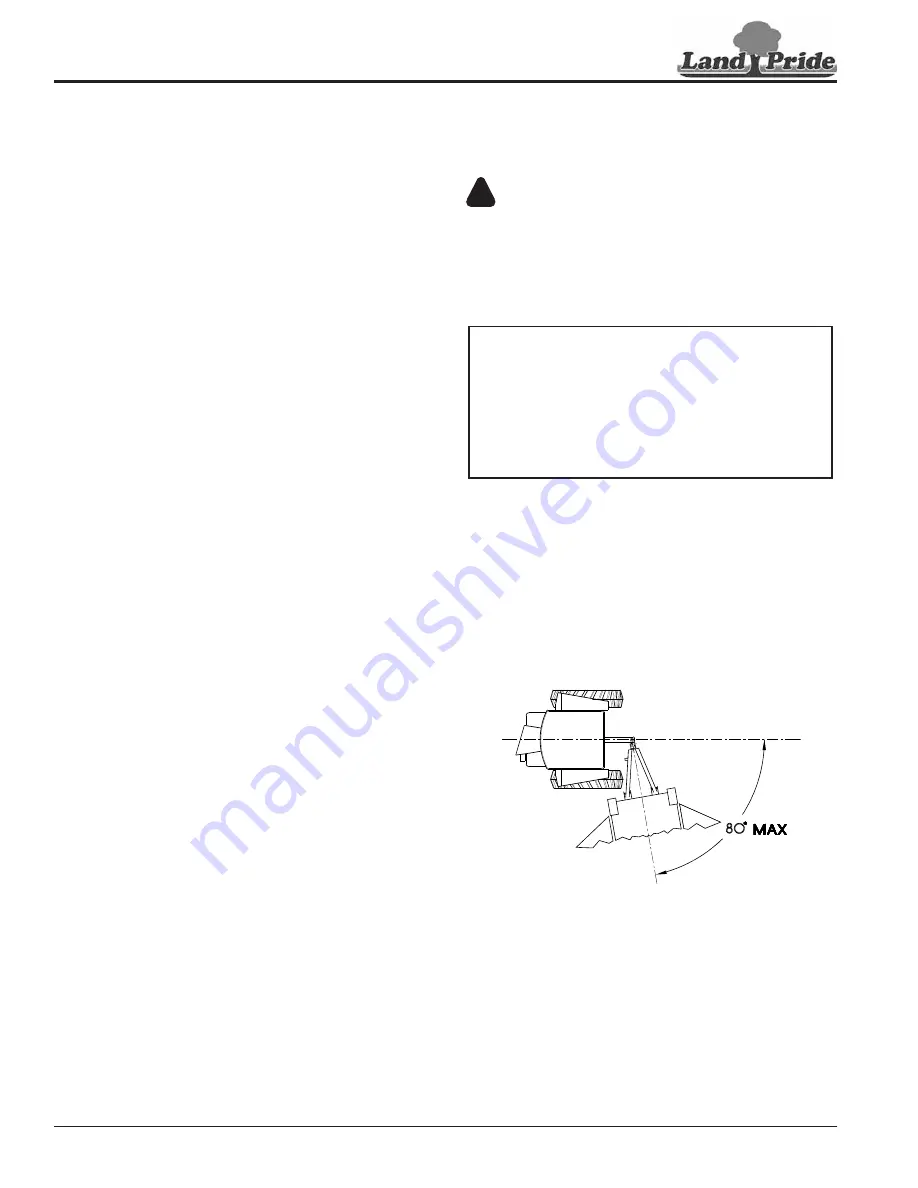
Section 3: Operating Instructions
12/12/18
RCB6610 & RCBM6610 Series 2 S/N Rotary Cutters 330-584M
34
•
Never carry riders on the implement or tractor. Riders can
obstruct the operator’s view, interfere with control of the
equipment, be pinched by moving components, become
entangled in rotating components, be struck by objects, be
thrown or fall from the equipment, etc.
•
Always shut tractor down using “Tractor Shutdown
Procedure” provided in this manual before dismounting
•
Perform scheduled maintenance. Check for loose
hardware, missing parts, broken parts, structural cracks,
and excessive wear. Make repairs before putting implement
back into service. Serious breakdowns can result in injury
•
Do not raise the wing off the ground when mowing across
an incline. The weight of the wing will increase the risk of a
•
Operate only power machines equipped with a certified
Roll-Over Protective Structure (ROPS) and seat belt. Keep
folding ROPS in the “locked up” position when
appropriate. If ROPS is in the locked up position, fasten seat
belt snugly and securely to help protect against serious
injury or death from falling and machine overturn.
•
Watch while making tight turns to ensure that the rear
tractor tires and lower 3-point arms do not make contact
with cutter hitch, driveline or deck. Keep lower 3-point
arms raised at all times when hitched to a pull-type cutter.
•
Wait for blades to come to a complete stop before accessing
blade bolts through blade bolt access hole.
•
Do not use implement to lift objects; to pull objects such as
fence posts, stumps, etc; or to push objects. The unit is not
designed or guarded for these uses.
•
Do not use implement to tow other equipment unless it is
designed with a tow hitch. Doing so can result in loss of
control and damage the equipment.
•
Do not operate a cutter with a hitch or hitch pin that is
excessively worn, bent, broken, or has structural cracks.
The hitch and/or hitch pin can break apart separating cutter
•
Avoid catching hydraulic hoses on brush, posts, tree limbs,
and other protrusions that could damage and/or break them.
•
Buildup of debris around moving components and
gearboxes is a fire hazard. Keep rotating parts and
gearboxes free from debris to avoid serious injury and
•
Improper oil level can cause bearing failure and be a fire
hazard. Maintain proper gearbox oil level to avoid serious
•
Do not exceed rated cutting capacity of your cutter. See
specifications & capacities for specified cutting capacity.
Exceeding rated cutting capacity can damage drive
components, cutter blades, and deck components.
•
Do not operate a broken or bent driveline. Such a driveline
will break apart while rotating at high speeds and can cause
serious injury or death. Always remove the implement from
use until the damaged driveline can be repaired or replaced.
•
The cutter must be operated with wing and weight box
attached. Removing one will increase risk of rollover.
Removing one or both will exposed blades. Blades rotating
at high speed will cut body extremities and throw objects.
CAUTION
!
To avoid minor or moderate injury:
Some tractors are equipped with two power take-off speeds.
Be certain your tractor’s power take-off is set at the
implement’s rated power take-off speed or equipment
breakage may result. RC models are rated for 540 rpm and
RCM models are rated for 1000 rpm.
Avoid Extreme Turning Angles
The RCB66 Series cutters are equipped with a constant
velocity main driveline capable of 80
o
maximum turning
angle. Plan your field cutting to minimize number of turns,
especially extreme turning angles. Avoid tractor-to-cutter
turning angles that exceed driveline maximum turning
angle of 80
o
. If a turn sharper than 80
o
cannot be
avoided, disengage tractor power take-off and wait for the
driveline to stop rotating before making the turn.
Constant Velocity (CV) Driveline
Figure 3-1
IMPORTANT:
Maintain correct power take-off speed.
Loss of power take-off speed will allow blades to
swing back and result in ragged, uneven cutting.
IMPORTANT:
If wing driveline profile is bent or
20795
















































